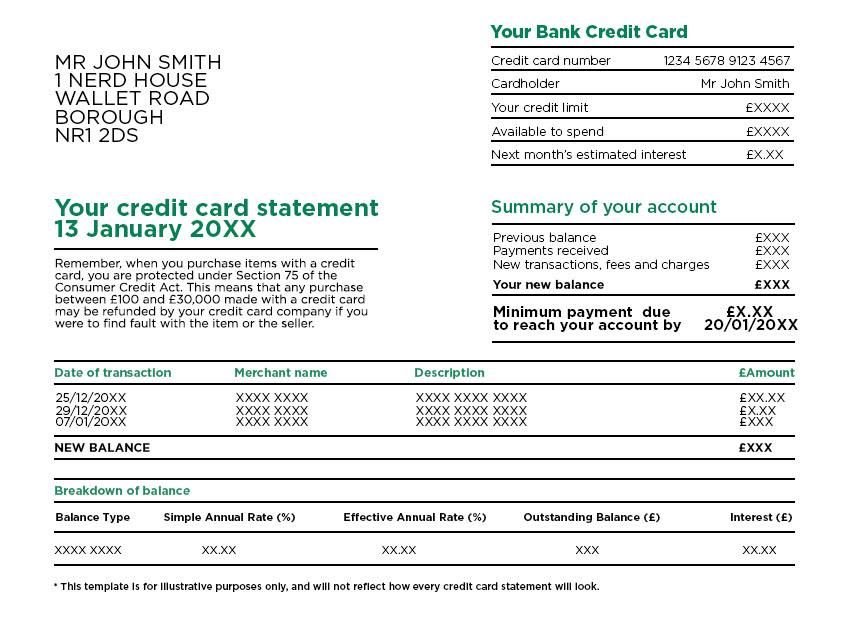Your credit card statement is a summary of everything that has happened to your account over the past month. Understanding your statement and knowing what to check will help you get the most from your credit card and ensure you don’t pay more charges or interest than necessary.
Table of Contents
How and when do I get my credit card statement?
Your credit card provider will issue a statement once a month. How you get your credit card statement will depend on your account settings. Either you’ll receive a paper statement in the post, or it will be issued electronically.
If you have opted to go paperless, your statement will appear in your online account and you should receive an email telling you it is ready to view.
» MORE: Compare best credit cards
What is on a credit card statement?
Here’s an example of a credit card statement.

A credit card statement tells you:
- Your balance. This is how much you owed on your credit card on the day the statement was created.
- Minimum payment due. This is the smallest amount you need to pay in order to avoid penalty charges.
- Payment due date. When your minimum payment needs to reach your account, otherwise you’ll be charged late fees.
- Balance breakdown. This shows what type of transactions you’ve made and the interest rate they will attract. For example, you may pay a different rate for purchases, balance transfers and cash withdrawals.
- Outstanding balance. Any balance that wasn’t paid off from your last statement will have been carried over onto your most recent statement.
- Your credit limit. This is the maximum amount you can put on your credit card. (Read more in our guide to credit card limits.)
- Transactions. There will be a list of any transactions on your credit card since your last statement. This should show the date the payment occurred and a brief description of the transaction, such as the name of the retailer and how much was spent. You will also see any payments you made to your credit card in this list.
- Summary box. This contains key information related to your credit card, such as any upcoming changes to your interest rates.
What to look for on your credit card statement
You must check your credit card statement each month. This allows you to spot any mistakes or suspicious activity on your credit card. It also means you can make sure you are keeping on top of your repayments, so your credit card use isn’t damaging your credit score. Here’s what to watch out for.
Penalty fees
Check your credit card statement to see if you were charged any penalty fees last month. If there are any, check to see if they were charged correctly. Did you go over your credit limit, were you late paying the minimum payment last month, or did you forget to pay it at all?
If the fees are a mistake, query them with your credit card provider. If, on the other hand, they were charged correctly, think about how you can avoid them in the future. To avoid missing or making late payments, consider setting up a direct debit to pay off at least the minimum amount on your card each month. That way you’ll never pay a late penalty again.
(If you’re able, you should pay more than your minimum monthly payment. This will reduce the amount of interest you pay and help you clear your debt faster.)
Suspicious payments
Read over your transactions and highlight any you don’t recognise or where the amount is more than you expected. If you don’t recognise a retailer do a quick internet search as some businesses will appear on your statement with a name you may not be familiar with. If you still don’t recognise the transaction, call your credit card issuer immediately.
Your balance
If you aren’t clearing your credit card in full each month keep an eye on your balance. Is it getting dangerously high? Monitoring the amount you owe will help you avoid building a debt you can’t afford to repay. If it is getting high, try to limit your card use and make an effort to pay off some, or all, of your debt.
Interest rates
Check what interest rates you are paying. Has a promotional deal, such as 0% on purchases or balance transfers, run out? You may be able to apply for another credit card with a lower interest rate.
» MORE: How to choose a credit card




